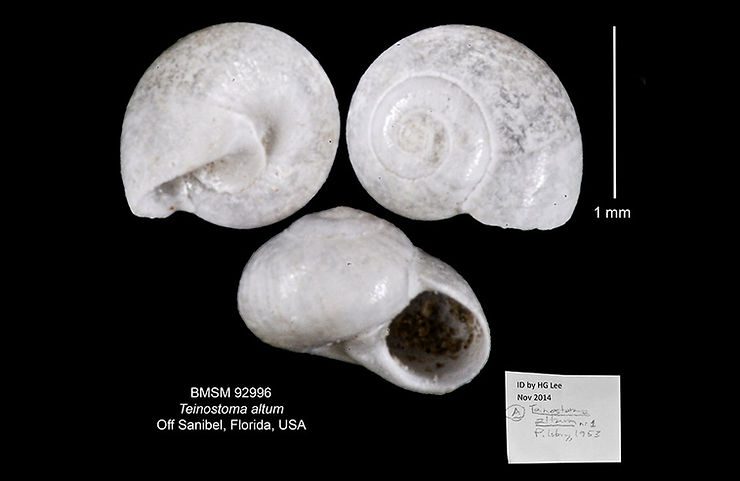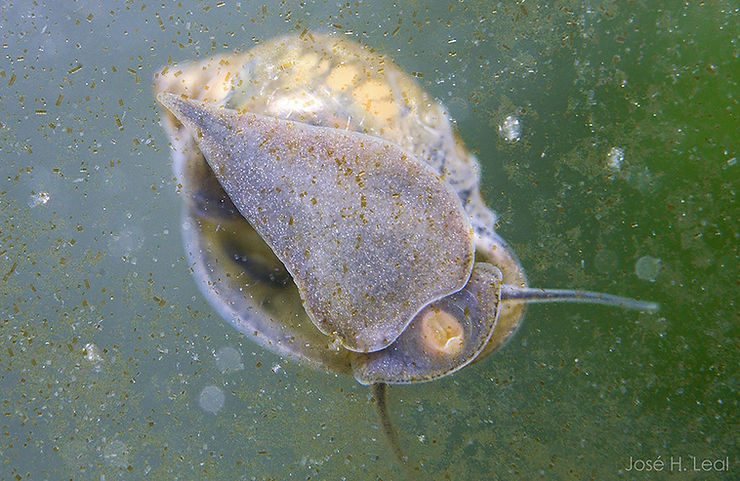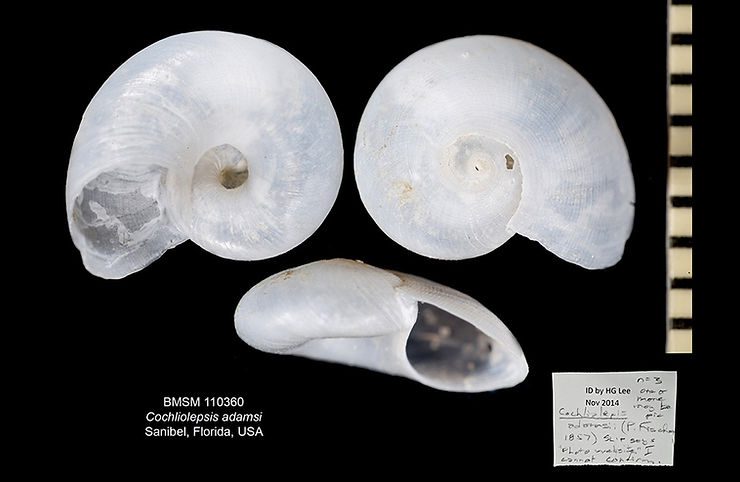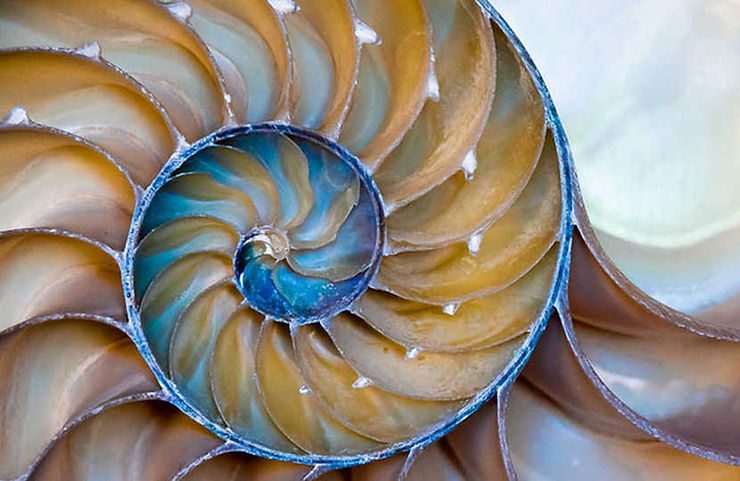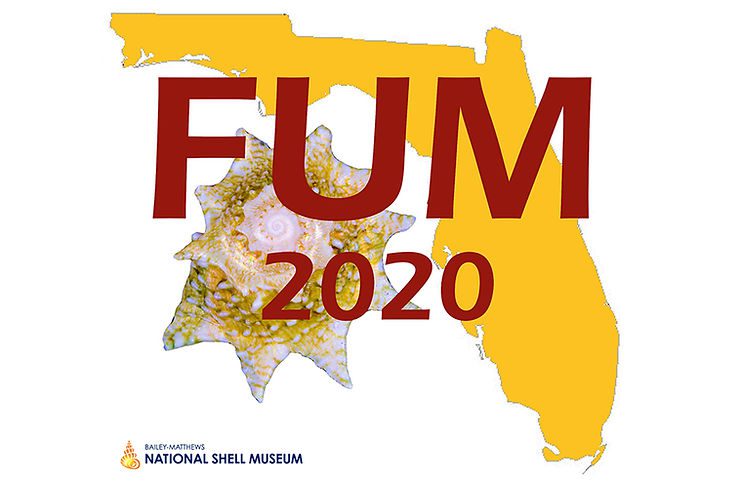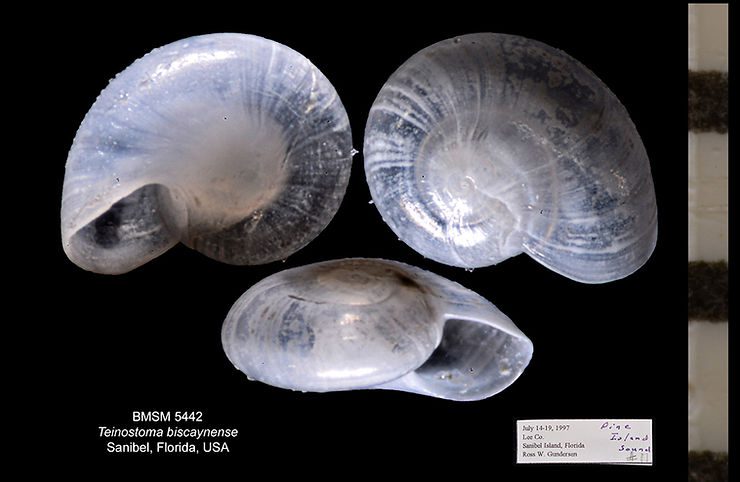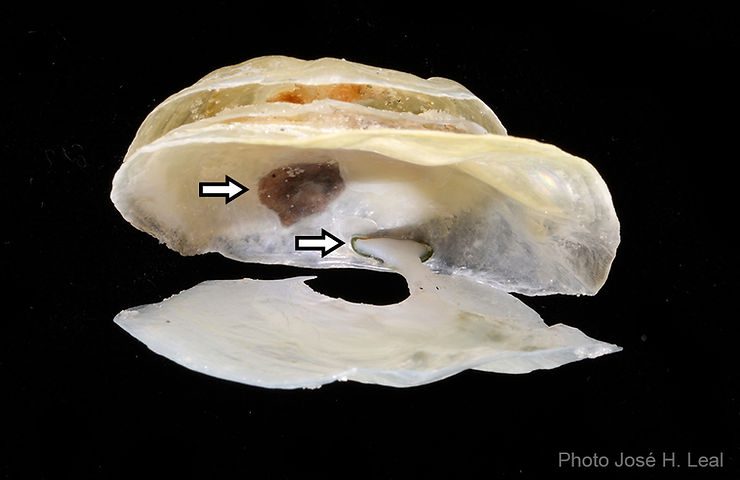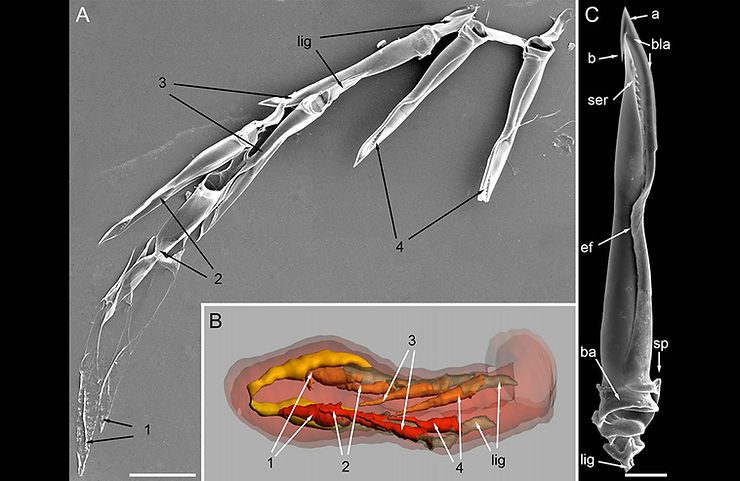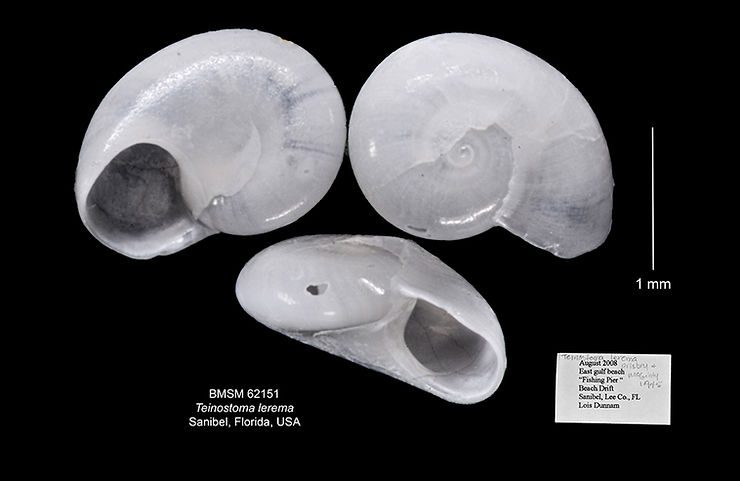
Shell of the Week – The Hidden-spire Vitrinella
This species is actually the Hidden-spire Vitrinella, Teinostoma cryptospira (A.E. Verrrill, 1884), not the Trifle Vitrinella, Teinostoma lerema, as identified in the original posting. At 2 mm (0.08 inch) maximum size, the Hidden-spire Vitrinella is one of the smallest members of the family Tornidae in Florida. The suture (line where two successive whorls join) in this species is not very visible, not forming a distinct line on the shell surface. The shell surface is smooth, the aperture round

